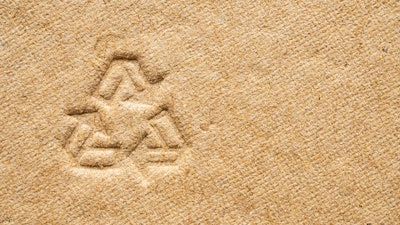
Great innovations are consistently popping up from major food & beverage manufacturers in the area of sustainability. They’ve come in the form of commitments to carbon neutrality goals and renewable energy use, improving sourcing methods and using more sustainable packaging materials.
On the latter, one of the ways companies like Nestlé and Unilever are trying to improve packaging is through swapping plastic for paper. It’s very renewable and easy for consumers to recycle. In recent years, more and more paper and cardboard are being used for beverages, fast food containers and fruit trays, besides replacing plastic straws.
But there’s a major issue: When used for food or liquid consumer product packaging, paper-based packaging tends to become soggy, leaving its contents to become stale much faster than plastic otherwise would.
 iStock
iStock
The Journal reported that Nestle has recently begun using coated paper packets for its Sure! Snack bars and Nesquik cocoa powder, instead of traditional plastic and aluminum packaging. The new plastic coating used dissolves within the paper-recycling, setting them apart from common paper cubs and fast food boxes that use tightly-bonded plastic liners — often rendering them unrecyclable.
Similarly, Unilever has started packaging one brand of ice cream in a paper carton coated with cornstarch, which helps protect the contents during freezing and moist circumstances. The company said it can be recycled at paper mills or industrially composed.
While these are interesting innovations, the Journal noted that similar examples are few-and-far-between, as challenges of shelf life and local weather present major obstacles to widespread sustainable packaging. For Nestle’s paper packaged Nesquik, it halved the per bag quantity due to the reduced shelf life compared to plastic. That’s besides the fact that paper is harder to fold and more easily torn than plastic, combined with added deforestation that could result from more reliance on it.
Nevertheless, there’s certainly a market for paper packaging. In Europe, which has added regulation to cut down on plastic waste and even instituted a tax on plastic packaging in some areas, paper could take 11 percent of plastic packaging’s market share by 2031 for verticals of meals, drink and private care, according to financial services firm UBS. And worldwide, UBS estimates a potential $38.7 billion market for paper packaging.





















